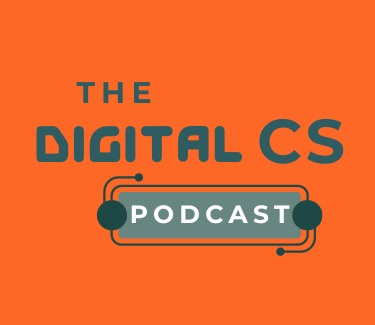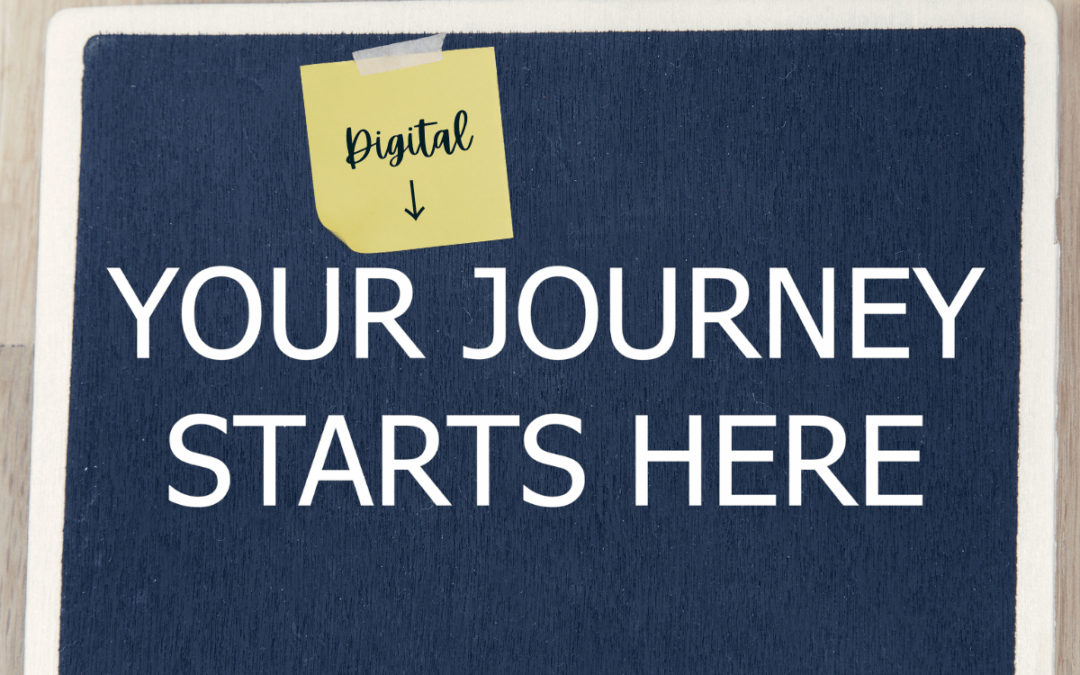The #1 question I get is: Where do I start with Digital CS?
Digital Customer Success (DCS), to many, can be such a black box. It never ceases to amaze me how many view it as an ‘either you have it or you don’t’ scenario vs. what it really should be: an iterative set of motions designed around your own customer journey, people & processes.
As such, I thought it would be helpful to spend a few verbs and nouns on the topic of where to get started if you’re new to this whole ‘digital thing’ and want to get hip to the times. Trust me – you’re not alone! There are a lot of CS leaders who are wrestling with this as we speak.
Start with a Strategy
Any good leader, CS or otherwise, will tell you that in order to implement something it is wise to go into it with a clear set of objectives and outcomes to measure. Pulling this together doesn’t have to be a complex exercise, yet invariably becomes a bit of a beast to tackle.
Fundamentally speaking though, spend some time at the outset thinking about the major customer and internal challenges you’d like to solve for and how you might measure the success of these solutions.
You may end up with a fairly comprehensive set of objectives – which is where ‘overwhelm’ can set in quickly. That is why I typically recommend as a next step to prioritize your efforts and devise a set of phases to tackle your big audacious goals.
Build A Strong Operational Foundation
One great place to begin is by reviewing what I call The Digital Customer Success Sweet Spot, that magical combination of Data, Customer Journey & Automations that make up the core of DCS. It’s important to review this as getting the foundations right are critical to long term success. The article linked above will give you the deets.
There are certainly shortcuts to getting started quickly with some basic motions, and I’m not against doing so for the sake of quick progress. That said, I do think that it is important to go into a quick win with eyes wide open by understanding the impact of the decisions you make now for your digital program down the road.
Onboarding is a Great Place to Start
On a more tactical level though, one of the best places to start (heck, you might already be doing this) is customer onboarding. It’s fair to say that the most common digital motion is an onboarding email, primarily because it’s one of the easiest points along the customer journey to identify.
Once an account officially moves to post-sale, there is a very clear point in time from which to base a chain of engagements on, and email presents the least number of barriers for entry.
That said, a lot of orgs stop at that initial email and don’t do anything else. Now, that doesn’t necessarily mean that you should add another email to the mix. In fact, it’s quite likely that one email should suffice.
Instead, have a look at your overall onboarding process and identify areas where additional automation can help your customers succeed or your internal team members to be more efficient.
A few of examples would be:
- Expand your email campaigns to be tailored to specific personas
- Automate data-handoff between sales to post-sales teams
- Create customer product walk-throughs with platforms like Pendo, Guideflow or Scribe
- Do a video-intro of your post-sale team to the customer, whether it be your project manager, CSM or perhaps support leadership.
Beyond Onboarding
It’s helpful to refer to your customer journey for key points where customers should be accomplishing specific tasks and/or points where they typically get themselves in trouble. These are prime points for which timely distribution of content and resources can really help move the customer along.
A few examples here include:
- Reaching out to celebrate a user’s accomplishment, and perhaps offering them some swag
- Responding to a customer contact who has returned a survey to you
- Engaging a customer based on some telemetry which indicate signs of trouble
These non-time based engagements rely on a lot of data to help drive them but can make a massive difference in how the customer perceives you and ultimately your relationship with that client. There is a lot of creativity that goes into building these types of motions, but they should all be rooted in driving the behaviors which you feel make for successful customers.
Pre-Renewal
Another place where time-based engagements can start to pick up again is some sort of pre-renewal flow. Especially if you’re a SaaS subscription business, you’ll basically live and die by a customer’s renewal date. It serves as a quasi deadline upon which you can base certain customer engagements to help secure the renewal.
This is also where being persona-specific can really be helpful. For instance, you’ll want to engage your executive decision maker in ways that provide high-level readouts and accomplishments based on the overall ROI of your relationship. On the flip side, your account champion may need to be engaged on a more transactional level based on in-flight initiatives.
Ultimately, this period is your time to prove to your customer that the outcomes they were hoping to achieve when they signed their initial contract have been achieved and/or are well underway to delivery.
There is definitely a lot of human-first activity that should be part of this stage in an account’s lifecycle, however your digital motions should work hand-in-hand with and assist those assigned to the account to deliver value in an efficient manner.
A few examples of digital motions you might implement as part of this pre-renewal period would include:
- Time-based triggers for CSMs, Account Managers, AE’s, etc that clearly identify key timelines that lead up to renewal.
- Create and distribute automated readouts to execs and champions of key accomplishments and metrics that display the success of the customer on your platform.
Summary
At the end of the day, view your digital motions as a tool in your toolbox to help your customers move along the journey and avoid pitfalls, while simultaneously creating efficiencies for your internal teams so that they can better serve the customer.
One best practice in establishing which digital motions to prioritize is to survey your existing CSMs to understand what communications they are distributing most often and what frustration points they face that can potentially be aided by automation.
Every business is completely unique, so it will take some investigation to figure out where the low effort/high impact efficiencies can be implemented, but prioritizing this way can make sure that your digital motions start off on a high note and make a massive difference to the business.
Want to see more content like this?
Sign up for my weekly newsletter for updates about the podcast, as well as digital CS best practices! No spam – I promise.

